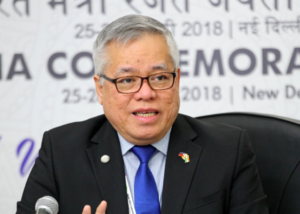The Philippines has formally expressed its interest to join another mega free trade agreement (FTA) after signing the world’s largest trade deal backed by China late last year.
The Philippines, through the Department of Trade and Industry (DTI), wants to be part of the Comprehensive and Progressive Agreement for Trans-Pacific Partnership (CPTPP), an FTA signed by 11 Asia-Pacific countries. Trade and Industry Undersecretary Ceferino Rodolfo said Secretary Ramon Lopez of the DTI has written to New Zealand, as the depository country of the CPTPP, that the Philippines intended to join the group.
Rodolfo, speaking during a business forum called Make it Happen in the Philippines, also said the Philippines and India were exploring the possibility of having their own FTA. . The CPTPP was based on the Trans-Pacific Partnership (TPP), a deal championed by the Obama administration until US President Donald Trump withdrew from the negotiations in 2017. The remaining countries from the TPP later formed the CPTPP. Eleven countries comprise the CPTPP, namely Australia, Brunei Darussalam, Canada, Chile, Japan, Malaysia, Mexico, New Zealand, Peru, Singapore and Vietnam. It was signed in March 2018 and entered into force in December the same year after majority of the signatories ratified the agreement. The Philippines previously wanted to join the TPP, with the Department of Finance even saying in 2016 under the Aquino administration that the country stood to gain from becoming a member of the trade pact.
The renewed interest to join the successor of the TPP deal comes after the Philippines signed last November the Regional Comprehensive Economic Partnership (RCEP) agreement, which accounts for about 30 percent of the global economy.
The RCEP was signed by the 10 member-states of the Association of the Southeast Asian Nation and five free trade agreement partners—Australia, New Zealand, Korea, Japan and China.
According to the DTI, the RCEP countries accounted for 50 percent of the Philippine export market and 61 percent of Philippine import sources last year. The region also accounted for 11.4 percent of foreign direct investments that entered the country in 2019. —Roy Stephen C. Canivel



